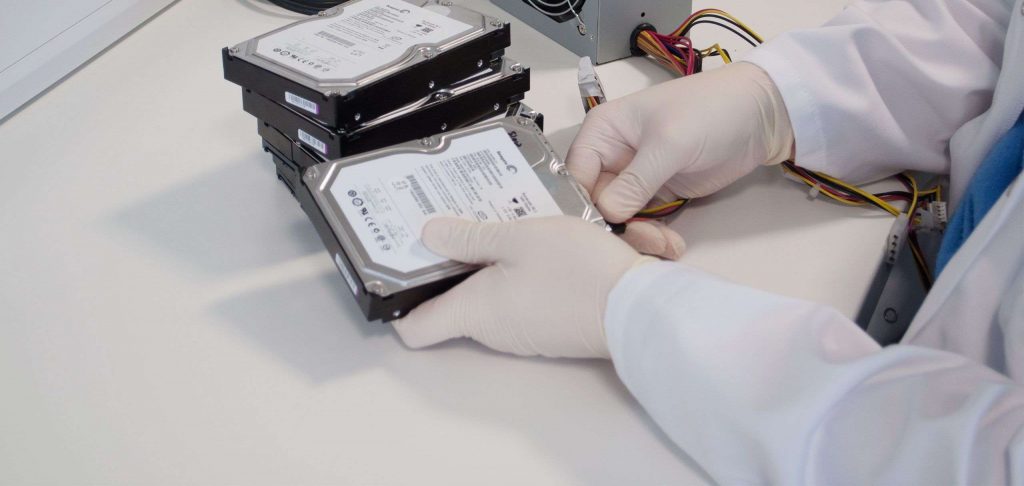RAID 0 ( Stripping ). There is no redundancy in this array. The principle of interleaved recording is used – Data Recovery Services divided into blocks is recorded simultaneously on several disks. If one of the drives fails, the entire array is destroyed. To Data Recovery Services from a RAID array, you must first recover the information from the failed drive.
RAID 1 ( Mirroring ). It is a redundant array in which two drives are completely identical. Data is written to both disks at the same time, which provides duplication of information. If one of the drives fails, the array information is not lost. In the event of a controller breakdown or failure, the disk can be connected directly and read information from it.
RAID 10 ( RAID 1+0). Combination of redundant RAID 1 and high performance RAID 0. Requires 4 or more drives. Data is written to blocks of mirrored disks. If one of the drives fails, the array continues to operate.
If the controller fails, you need to correctly identify the pairs of drives that make up the stripes . Then, information is read from each pair in the same way as on a regular RAID 0.

If two drives fail at the same time, what are the possible options?
1) Both drives failed in one stripe . The controller handled the failure correctly and the array is functioning normally.
2) Both drives are in one stripe , but the array has collapsed. In such a situation, you need to programmatically assemble a working stripe .
3) Drives in different stripes . In one, the first disk failed, and in the other, the second disk failed. You need to programmatically build RAID 0 from the surviving drives of each of the stripes .
4) Disks of the same name from different stripes failed . Then one of the failed disks needs to be repaired or try to read data from it, and then assemble software RAID .
Data striping with parity. The data blocks, along with the parity blocks, are distributed across three or more disks. Failure of one of the disks does not lead to data loss, and, after rebuilding, the array continues to function.
If the controller handles the exception incorrectly, or during a rebuild after a drive is replaced, the array may fall apart. In rare cases, after one drive fails, another one fails after a while.
It is possible to programmatically build a RAID 0 array if only one disk has failed. When two disks fail at once, information is first read from one of them onto a working disk, then you can try to assemble the array.
The described principles of data recovery of RAID arrays will help you find a way out in difficult situations.




